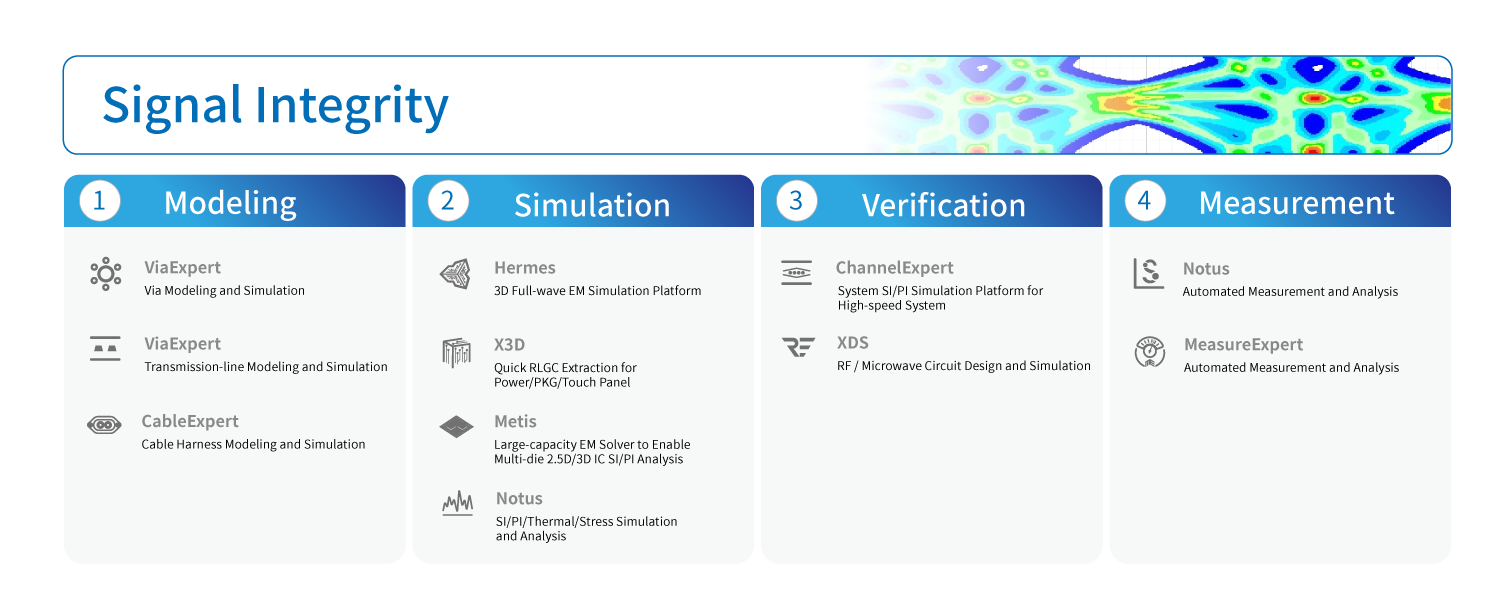
Signal Integrity
Background

Signal Integrity is a key issue in electronic system design, which involves the stability and accuracy of signals during transmission on circuit boards, cables or other transmission media. Here are some challenges and pain points of signal integrity issues.
•Timing issues: In high-speed electronic systems, timing issues are a common challenge. The arrival time of the signal, clock distribution, signal propagation delay, etc. all need to be precisely controlled to ensure the normal operation of the system.
•Signal noise: Signals are easily affected by noise during transmission, such as electromagnetic interference, crosstalk, and jitter. This noise can cause signal distortion, affecting system performance.
•Reflection and attenuation: Signals may reflect and attenuate on transmission lines, especially in high-speed transmission. This may cause signal integrity issues and measures need to be taken to mitigate these effects, such as terminal resistors and impedance matching.
•Solving signal integrity issues requires considering circuit design, layout, material selection, and testing methods comprehensively. High-speed electronic system design engineers often use EDA simulation tools to simulate signal transmission and take measures to mitigate the impact of signal integrity issues, ensuring the reliability and performance of the system.
Solution

Xpeedic's Signal Integrity EDA solution covers the entire circuit design simulation process from chip, package to system. Firstly, it provides templated modeling tools for structures with impedance discontinuities, which support the rapid generation of 3D electromagnetic simulation models of vias, array combinations, transmission lines, and cables. Secondly, it supports the import of various mainstream layout formats, can automatically create ports, gold wires and solder balls, and also provides convenient model post-processing and simplification processes, greatly improving the efficiency of building electromagnetic models. In addition, the signal integrity EDA solution adopts a finite element algorithm electromagnetic simulation solver, ensuring that users obtain high-precision electromagnetic simulation data, and can accurately analyze the possible noise, reflections, and losses that signals may suffer during transmission. Finally, this solution provides powerful post-processing tools for simulation data, including frequency and time domain analysis, crosstalk analysis, eye diagram analysis, and one-click simulation report generation functions.

